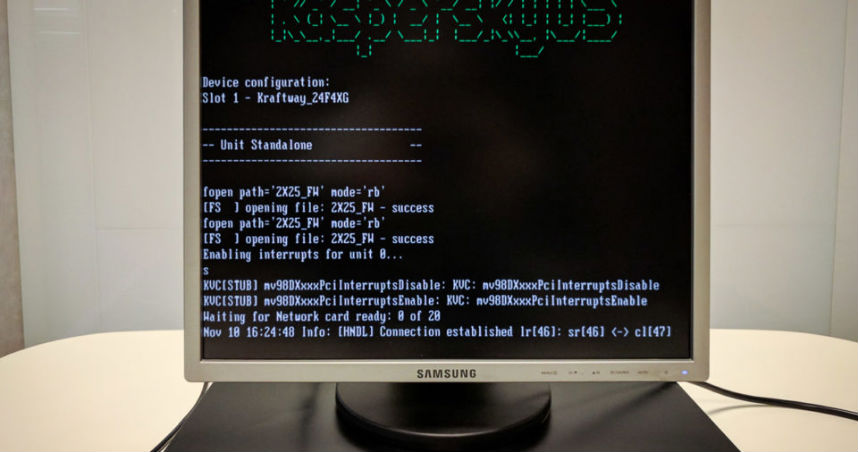Kaspersky OS: Antivirus Firm Launches Its Own “Hackproof” OS, Based On Microkernel

Short Bytes: A built-from-scratch operating system was in the development for the last 14 years at the Kaspersky Lab. Known as Kaspersky OS – doesn’t borrow anything from Linux – it’s a secure OS based on microkernel architecture and aimed for infrastructure and IoT devices.
(Update: KasperskyOS is now available. Know more about it here and read its best features.)
Not many details have been revealed by the CEO Eugene Kaspersky in his blog post. The GUI-less OS – as it appears in the image – has been designed from scratch and Eugene said it doesn’t have “even the slightest smell of Linux”. He actually tagged “Kaspersky OS being non-Linux” as one of the three main distinctive features he mentioned.
The other two features he briefly described are rather fascinating. The first feature is that the Kaspersky OS is based on microkernel architecture. The OS can be custom-designed as per requirements by using different modification blocks. This is similar to what Cyanogen Inc. has implemented in the module-based form of Cyanogen Modular OS for smartphones.

The second distinctive feature is the inbuilt security system which can control application behavior and OS modules. It touts Kaspersky OS as practically unhackable, unless a cyber-baddie has a quantum computer – which will be required to crack the digital signature of the platform – at his disposal.
Eugene puts emphasis on the fact that cyber threats have become a serious concern than before. They have realized that their operating system should cater different applications like acting as a support for the development of protected industrial control systems. Also, in the creation of protected embedded devices including IoT (Internet of Things).
“I’m hoping it’s obvious by now how protecting the IoT and, of course, critical infrastructure (industry, transport, telecoms, etc.) from IT threats is simply mandatory,” Eugene said after quoting the example of the recent DDoS attacks on Dyn DNS – the 1Tbps attack which took down almost half of the internet.
“I also hope it’s clear that it’s better – no matter how difficult – to build IoT/infrastructure devices from the very beginning in such a way that hacking them is practically impossible.”
If you have something to add, tell us in the comments below.
Also Read: Google Blocked Hundreds Of Accounts Of Oversmart People, Don’t Mess With Google






